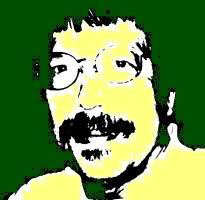Entering the 21st Century: SUNY GER, ACRL Standards, Middle States and 3 Directions
We have redesigned our General Education program at Oswego to infuse information literacy into our curriculum. I served on the General Education Council throughout this process and encountered two happy surprises: the 3 Directions conceptualization of information literacy is a settled issue among our faculty and taken for granted; and the only way to concieve of basic computer use at this time is in terms of digital literacy, with disruptive outcomes in the disciplines. Background on information literacy in our General Education follows an explanation of my surprises.First Surprise: Information Literacy as a settled issue
At the beginning of deliberations on infusion I shared with the Council my earlier post on "Integrated Literacy Across the Curriculum," and a continuing re-statement of my position that information literacy broadly-concieved encompasses reading and writing and thinking as well searching for sources, and necessarily incorporates the SUNY GER categories for Writing and Critical Thinking as well as Computer and Information Literacy. This is an ax I have been grinding here for over a decade with no clear success, at least until I saw this sentence in the Council minutes:To begin, there is no little degree of overlap between the third learning outcome in Computer and Information Literacy, the third learning outcome in Writing, and the learning outcomes for Critical ThinkingThis is not the revolution, but my feeling that my position is not only accepted by the Council but also more broadly by the faculty was reinforced when we began to review the infusion plans from the departments. Most of the plans documented how students met the information literacy outcomes in the context of learning to do research and write in their disciplines. In fact most departments found this easy to document, leaving the computer literacy outcome as the primary point of failure.
I am beginning to feel that the conceptualization of information literacy as the broad ability to use information for learning, life and work is almost taken for granted at SUNY Oswego. That is better than a revolution--it means that information literacy is becoming an institution.
Second Surprise: Re-inventing "basic operations of personal computer use" as digital literacy in the disciplines
We quickly encountered problems in how well our faculty could address computer use in their programs. It certainly seems quaint to me to be concerned about "personal computer use" as a college level learning outcome in 2013.- Capacity of faculty to teach and assess digital presentation
- Variation in use of computers in the disciplines especially in regard to data in the humanities
Background
I arrived in Oswego in August 2000, just in time to greet the 21st Century on January 1, 2001. Oswego State had just started a revised general education program based on the 1999 SUNY GER (General Education Requirements) which included an information literacy requirement under the guise of Computer and Information Management.
"Students will:
- perform the basic operations of personal computer use;
- understand and use basic research techniques; and
- locate, evaluate, and synthesize information from a variety of sources."
Then three years ago SUNY began to be more flexible about the implementation of SUNY GER and at Oswego we took advantage of that to improve our program, in part by simplifying and streamlining the program through reducing the required courses by a third. As a result Oswego's General Education program now requires that Computer and Information Literacy be met by infusion. Departments then had to either document how the learning outcomes would be achieved in the required courses for each major, or revise their programs to require a course, usually in Computer Science, that is determined to include the learning outcomes for Computer and Information Literacy.
This past year, then, the General Education Council reviewed proposed infusion plans from almost all our departments, negotiated with departments that were not quite on the mark, approved most of the plans, and coordinated with the Academic Policies Council to approve a handful of program revisions.



